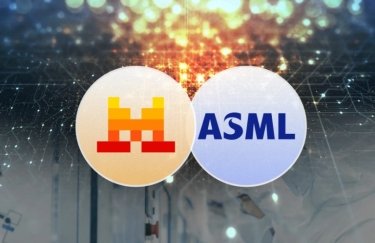

Amazon — a $1 trillion company so multifaceted and bizarre that it challenges the definition of the word “company” — did many things this year that a lot of people cared about. It conducted a year-long “search” for an American city in which to build a large office. It pitched its facial recognition software to Immigration and Customs Enforcement and sold it to several other law enforcement agencies, despite the fact that it’s reportedly not very good.
It raised its minimum hourly wage to $15 after extreme political pressure. It made headway on previous, vaguer attempts to squash Etsy and eBay. It eliminated order minimums for free shipping around the holiday shopping season. It acquired a pharmaceutical company.
It also did many things people probably didn’t have time to think about, and which I only know of because I am subscribed to the Amazon news update email list.
As of publishing time for this piece, Amazon has sent out more than 200 press releases in 2018, and I have read or skimmed nearly all of them, excluding only things that seemed like an obvious waste of my time.
Most of these press releases were both mundane and anodyne, as not every day can be red-letter, and because, of course, Amazon is not putting anything but a sunny, peppy face on its daily existence when it writes missives about its own business evolution. (Asked for comment about its huge year, an Amazon spokesperson mostly touted the “intense and well-established competition” the company faces in areas from tech to retail entertainment.)
Nevertheless, hundreds of tiny updates do paint a picture of Amazon’s increasingly muscly tentacle reach toward countless aspects of culture and business. Here are the iterations and small additions and incremental moves and seemingly strange choices that Amazon made in 2018 — so many that we didn’t even have time to notice.
Put Alexa in everything
Each year, Amazon gives millions of dollars to startups and researchers who are working on voice technology projects through the Alexa Fund and the Amazon Research Awards. And each year, it gives its voice assistant Alexa about a zillion new things to do and new devices to live in.
Unlike its main voice competitors Google and Apple, Amazon does not make a phone, so it has to be extremely aggressive in the smart home space. To that end, it offers third-party developers pretty open access to Alexa and claims that its assistant has been incorporated into tens of millions of devices across its own product lines and the dozens of companies it partners with.

This year, Amazon announced that Alexa’s deep neural networks would be updated so that it can understand a whispering person, ask smarter follow-up questions, and pick up new languages faster. It can also predict the outcomes of sporting events and answer math, science, and engineering questions.
In April, Amazon announced Alexa Skill Blueprints, which are templates designed “for you and your family” to create customized Alexa features specific to your home. For example, you can make a list of recurring family jokes or family trivia for Alexa to memorize and tell your family, or ask Alexa to write an “adventure story” starring your child.
Amazon also put “Experience Centers” in Lennar model homes across the country, so that customers considering living in a housing development could also consider what it might be to have “Alexa in their everyday lives.”
A few weeks later, Alexa for Hospitality launched, making Alexa the go-to in-room control for smart devices in hotel rooms owned by Marriott, Westin, St. Regis, Aloft, and Autograph — specifically for Creston and Incomm devices made by Honeywell (also a new Amazon Web Services customer!).
In September, Amazon’s Alexa Fund invested in a prefab housing startup, leading its Series A funding round with an undisclosed amount in the millions.
Related
Smart speakers are everywhere this holiday season, but they’re really a gift for big tech companies
Expanded into physical retail with several new experiments
Amazon already has some physical bookstores, most of which opened last year. “What an interesting move,” we all said. “What an interesting choice! After killing physical bookstores not 10 years ago!”
This year, Amazon opened its second cashierless “Go” convenience store in Seattle, and its third in Colorado. There are also several in Chicago and one in San Francisco. And according to a report from Bloomberg, the company intends to open 3,000 of them by 2021. (Amazon Go stores are cashless and require you to own a smartphone and download the Amazon app; they do not take EBT.)

In September, Amazon also opened a “4-Star” store in Manhattan, which is a store that sells Amazon products that have been rated 4 out of 5 stars or higher, on average, on its website. Why? According to Amazon’s blog: “We created Amazon 4-star to be a place where customers can discover products they will love. Amazon 4-star’s selection is a direct reflection of our customers — what they’re buying and what they’re loving.” Another opened in Berkeley, California, in November.
The products, which the customers will discover, are a direct reflection of the customers — specifically what they have already bought, partly using free will but largely at the suggestion of Amazon.
The average person doesn’t need to care about Amazon’s brick-and-mortar retail aspirations at the moment. I bring it up only so they can be less surprised if Amazon ever tries to buy Target.
More or less cornered the market on gadgets for children
In April, Amazon announced FreeTime on Alexa, essentially parental controls for Alexa that make voice-equipped devices seem more appropriate as gifts for children. The new “family-focused features” included filters for explicit music, “bedtime limits,” and “positive reinforcement” for saying “please.”
In the press release, Amazon promised parents: “The more [kids] use Alexa, the smarter she will get,” and, “Gone are the days of shouting up the stairs for the kids to come down to dinner.”
In June, Amazon announced the Fire HD 10 Kids Edition — the company’s “largest tablet built from the ground up for kids.” The release points out that it is “a real tablet, not a toy,” and explains the Parents Dashboard, which gives parents the option to view daily activity reports and provides them with “discussion cards” so they can engage their children in conversation about whatever they were browsing that day.
No other major tech company has rolled out child-specific devices
So far, no other major tech company has rolled out child-specific devices — though they all offer family features and parental controls.
This year, Amazon also invested in Novel Effect, a startup making smart children’s books with voice recognition, and Sensible Object, a startup making smart children’s toys, like blocks, that connect to an app. Also, Unruly Studios, a startup that turns floor tiles into games that teach children to code. Also, Play Impossible, a startup that connects balls to an app that tracks “the speed, spin, height, and so much more of every throw, catch, toss, and tap.”
All sound like enjoyable enough activities, and also a great way to introduce your child to one of their first personal identities: Amazon customer.
Took over even more of the internet with Amazon Web Services
Amazon Web Services holds up much of the web. Its customers basically pay for the security, processing power, storage capabilities, and general might of Amazon’s wealth of virtual computers — its “cloud,” which lives in Amazon-run server farms and data centers that these companies then don’t have to actually own themselves.
The first time many of us noticed this was in March, when it briefly failed and we could not access any of the sites or services that were relying on it for cloud storage: Netflix, NASA, Spotify, Airbnb, Pinterest, Slack, um, the CIA.
Amazon owns more than a third of the world’s cloud storage business, and Amazon Web Services (AWS) technically encompasses more than 100 different services, including general computing and information storage, but also complicated databases, facial recognition and machine learning tools, and Internet of Things capabilities.
This year, among dozens of other confusing updates, AWS expanded its super-secure GovCloud service, allowing it to add the Department of Defense, the Department of Justice, the Department of Homeland Security, and defense contractors Lockheed Martin and Raytheon to its list of clients.
AWS also partnered with Lockheed Martin to get a competitive edge on faster and cheaper “downlinking” (downloading, basically) of information stored on satellites, making it officially part of the military industrial complex.
It also became the official cloud services provider of Verizon, Shutterfly (which has a 75-petabyte image library), Mobileye (an Intel subsidiary that makes computer vision and machine learning software for self-driving cars), Amgen (one of the biggest biotechnology companies in the world), Formula 1, Major League Baseball, 21st Century Fox, Samsung’s smart cargo ships division, and dozens of others.
None of this is cause for concern for an average shopper, but it’s yet another example of an industry that has allowed an almost absurd concentration of power and profit.
Most companies don’t store all of their information with a single cloud provider, but Amazon could effectively guarantee a monopoly on cloud storage for the government if it wins the Pentagon’s pending $10 billion, 10-year contract. (Google recently dropped out.)
Solidified its status as a real estate mogul
Before 2018 even started, Amazon owned or had leases on hundreds of millions of square feet of space — “More than 38 Pentagons worth of space,” as Curbed put it.
This year, in addition to the much-discussed HQ2 plans, Amazon announced a litany of new “development” projects. Among them is a new 430,000-square-foot “tech hub” in Boston, which will primarily be offices for Amazon Web Services and Alexa developers and some Audible employees, and require 2,000 new staff members.
A similarly enormous robotics development center is coming to Gaines Township, Michigan, where it will supposedly create 1,000 jobs in a town of 25,000 people. New fulfillment centers are popping up across the country like blisters, including for the first time in Alabama — an 855,000-square-foot facility outside of Birmingham, offering 1,500 new jobs. An almost identical facility opened outside Cleveland this October.

These facts were all noted by and interesting to the people who live in these cities. But as national news items, they are so frequent and similar that they often can blur together. Not documented by Amazon’s news update blog was the fact that it cut several hundred jobs (made “headcount adjustments”) at its Seattle headquarters in February due to “overstaffing.”
There are also not many specifics about how Amazon’s presence will affect any of these cities, or how it chose them, or how the cities welcomed them. Nobody’s turning away new jobs, but Amazon is typically incentivized to provide very little detail about the kinds of jobs it will provide, whom they’ll go to, or the impact the company’s sudden, enormous presence might have on affordable housing or public transportation — or any other core element of city and community that is typically studied before massive changes are made in a given place.
And it’s interesting, and perhaps unsurprising, that Amazon donated a lot of money to politicians in 2018. (Separate from the millions it spends each year on lobbying.) Thirty-nine congressional candidates received $10,000 or more, including Kim Schrier, a Congress member who represents Amazon’s home city of Seattle, who received $65,083.
Amazon also gave money to Suzan DelBene, a Democratic representative whose district includes much of the US-Canada border in Washington along the I-90 corridor, where entire towns are built around the fact that Canadians often have to pick up Amazon purchases at a United States PO box.
And to Bob Casey, a Democratic senator from Pennsylvania, a state with at least 10,000 Amazon employees. (Pennsylvania, by the way, offered Amazon $4.6 billion in subsidies to place its new headquarters in either Pittsburgh or Philadelphia.)
And to Claire McCaskill, a Democratic senator from Missouri. Though Missouri does not currently have an Amazon fulfillment center, it will have an 855,000-square-foot one with 1,500 employees in St. Peters by May 2019.
And to Virginia Sen. Mark Warren. When Amazon announced that its new headquarters would be split between New York City and Crystal City, Virginia, Warner told Yahoo Finance it was “a win for the whole region.”
Started making its own version of every single household essential, using years of its own data about what its users search for and buy
Amazon’s private-label brands have been bubbling up for some time, but 2018 was the year it became clear that the entire site had been wallpapered over with them. “Everything on Amazon is Amazon!” shouted a November headline in the New York Times’s Style section, followed by:
Not all of Amazon’s in-house brands are clearly labeled as Amazon-owned. Also, not all of them are actually owned by Amazon — many are just Amazon “exclusives,” like the J. Crew Mercantile line that lasted a mere 16 days.
Amazon private label brands span 21 departments on the site, from car accessories to furniture to diapers. Just one of Amazon household essentials brands, Solimo, which is sourced by an Amazon partner in India, makes everything from melatonin tablets to cough suppressants to women’s razors to toilet paper to dog food to over-the-counter sleep aids to meal-replacement shakes to pasta sauce.
And there are more than 1,500 items under the company’s AmazonBasics brand alone.
What would it mean for one corporation to have serious market share of every consumer-facing industry?
The mess of Amazon-owned and third-party products feels deliberately disorienting. These are the world’s unrivaled organizational and logistical experts — they could have made the distinctions clean and clear if they wanted to.
If you scrolled past the big-ticket electronics and popular toys in Amazon’s email about Cyber Monday deals, you could see that the retailer used the “holiday” to do more than sell millions more smart devices. The company also encouraged customers to switch to every generic item you could imagine stocking your home with.
In one day, your household could go from a collection of mixed-seller products to a home with Alexa in every room, Amazon food in every mouth, and Amazon clothes on every back.
And with that new household comes the question: What would it mean for one corporation to have serious market share of every consumer-facing industry? Since this has never really happened in the history of commerce, it’s a pretty uncomfortable imagination exercise. Analysts have said Amazon’s in-house brands could be, by themselves, a $25 billion business by 2022.
And a bunch of other stuff, which we’ll list in a lightning round
- Expanded its logistics system, whispering a threat to FedEx and UPS. Amazon already controlled its own freight ships, leased its own cargo planes, and owned its own 18-wheelers, but its February trial run of Shipping With Amazon represented its first step into officially entering the end-to-end pickup and delivery business.
- Bought more small but significant pieces of the film and TV industry, including the $250 million rights required to make a Lord of the Rings spinoff. Amazon Studios also signed exclusive deals with the sci-fi novelist Neil Gaiman, as well as Stranger Things writer Justin Doble and The Walking Dead creator Robert Kirkman, in pursuit of its own Game of Thrones.
- Spent $1 billion to acquire Ring, the popular doorbell-camera startup. (For Alexa!)
- Started eating Facebook’s and Google’s ad business, mostly by selling priority placement on its product search pages, leading investment bank Piper Jaffray to hypothesize that Amazon’s ad revenue would outpace its annual income from selling web services by 2021. Analyst Michael Olson predicted the two revenue sources would bring in $16 billion and $15 billion, respectively, by that time.
- Expanded Whole Foods Prime delivery to 60 cities, meaning that in 60 cities, you can have Whole Foods groceries delivered directly to your door exclusively via an Amazon Prime subscription.
- Started selling Christmas trees.
- Financed research at the University of Southern California that will look at “how a high number of robots find their paths efficiently and effectively in highly-filled spaces for warehouse automation.”
- Announced that Amazon Business — Amazon accounts designed for businesses — now brings in $10 billion in sales per year alone, with customers including “educational institutions, local governments, and more than half of the Fortune 100.”
- Exclusively launched the Calvin Klein “A$AP Rocky Trucker Jacket.”
What you might have noticed while reading this list, if you got this far, is that nothing on it was particularly jarring or unique. Almost everything sounded like something any company might do or also did this year.
When reached for comment, an Amazon spokesperson told Vox, “There is an important difference between horizontal breadth and vertical depth. We operate in a diverse range of businesses, from retail and entertainment to consumer electronics and technology services, and we have intense and well-established competition in each of these areas.”
That is fair! Walmart is still bigger than Amazon. Apple is still richer. Google still knows more about you. But what makes Amazon the behemoth many fear — and yet trust more than the government or the press — is how quickly and quietly it can do everything at once.
Sourse: vox.com





